Masters of Noir: Volume One Read online
* * *
Wonder Audiobooks, LLC
www.wonderaudio.com
Copyright ©2010 by Wonder Publishing Group
* * *
NOTICE: This work is copyrighted. It is licensed only for use by the original purchaser. Making copies of this work or distributing it to any unauthorized person by any means, including without limit email, floppy disk, file transfer, paper print out, or any other method constitutes a violation of International copyright law and subjects the violator to severe fines or imprisonment.
* * *
CONTENTS
IDENTITY UNKNOWN by JONATHAN CRAIG
THE GIRL BEHIND THE HEDGE by MICKEY SPILLANE
CARRERA'S WOMAN by ED McBAIN writing as RICHARD MARSTEN
BUTCHER by RICHARD S. PRATHER
LOOK DEATH IN THE EYE by LAWRENCE BLOCK
ON A SUNDAY AFTERNOON by GIL BREWER
FRAME by FRANK KANE
DOUBLE by BRUNO FISCHER
AS I LIE DEAD by FLETCHER FLORA
NOIR MASTER SERIES
* * * *
MASTER OF NOIR: VOLUME 1
Published by
Wonder Publishing Group Books,
a division of Wonder Audiobooks LLC
Northville, MI 48167
Compilation (C)2010 Wonder Publishing Group,
a division of Wonder Audiobooks LLC
ISBN: 978-1-61013-049-3
FIRST PUBLICATIONS
IDENTITY UNKNOWN by JONATHAN CRAIG was first published in Manhunt, August 1954.
THE GIRL BEHIND THE HEDGE by MICKEY SPILLANE was first published in Manhunt, October 1953.
CARRERA'S WOMAN by ED McBAIN writing as RICHARD MARSTEN was first published in Manhunt, Febuary 1953.
BUTCHER by RICHARD S. PRATHER was first published in Manhunt, June 1954.
LOOK DEATH IN THE EYE by LAWRENCE BLOCK was first published in Saturn Web Detective Story Magazine, April 1959.
ON A SUNDAY AFTERNOON by GIL BREWER was first published in Manhunt, January 1957.
FRAME by FRANK KANE was first published in Manhunt, December 1954.
DOUBLE by BRUNO FISCHER was first published in Manhunt, June 1954.
AS I LIE DEAD by FLETCHER FLORA was first published in Manhunt, Febuary 1953.
All rights reserved
IDENTITY UNKNOWN by JONATHAN CRAIG
The cheap furnished room in the brownstone where the girl had been murdered was so cramped that it was hard for Walt and the assistant M.E. and me to keep out of each other's way. The photographer and the other techs had finished half an hour ago and gone back to the station house. I'd put a patrolman at either end of the third-floor corridor to keep the crowd back. From the noise that came up both the front and back stairs, it seemed that half of New York's west side must be down there.
The building super was talking to the two ambulance attendants in the hallway just outside the door. He was beginning to rub on my nerves. The M.E. had stripped the girl, of course, and the super was trying his damnedest to get a clear gander at her.
"Relax, Jacobson,” I told him. “You've seen young girls before. Wait for us down the hall."
He gave me a hard look, but he moved away.
The M.E. pulled the sheet up over the girl's body. “That's it,” he said.
I motioned for the ambulance attendants to take her away. When the body was gone, and I'd shut the door, the M.E. sat down on the side of the bed and lit a cigar.
"She had a lot of living left to her,” he said. “She was about eighteen, I'd say. No older.” He shook his head. “Damn shame."
"You find anything besides those lumps on her jaw?” I asked.
"Not a thing, Dave. I won't know for sure till I post her, of course, but right now I'd say the cause of death was a fractured skull."
"Those bumps didn't look so bad though,” Walt said dubiously.
"That doesn't mean much,” the M.E. said. “When a person's hit hard enough on the chin, the force of the blow is transmitted to the point where the jaw hinges on the skull. That causes a fracture, and a lot of times it's fatal. The brain's a semi-solid, Walt, and it doesn't take much to damage it, or even tear it away from the skull altogether."
I nodded. “The skin wasn't broken, so the murder weapon was probably somebody's fist. And besides, if the killer had used a club or something, say, he'd have hit her almost anyplace else but on the jaw."
The M.E. took a deep drag on his cigar. “How'd you boys make out?"
"No good,” I said.
"No identification at all?"
"Not a bit."
"That's odd."
"Yeah,” Walt said. “The only clothes in the room were the ones she had on. Nothing in the closet, not even a suitcase. And nothing in the dresser. No letters. No anything. She must have used this room for something else besides living in it. We did find a purse, but there wasn't any identification in it. If she had any identification at all, then it must have been in a wallet, and somebody took it along with him."
"You're sure she wasn't attacked, Doc?” I asked.
"I can't be positive until I get her downtown, Dave. But I'd say no. There's no evidence of that at all. Her lipstick was a little smeared, you noticed, so she'd probably been kissing somebody. But I don't think there was anything more than that."
"I've got a hunch this is going to be one of the tough ones,” Walt said. “It just smells tough, if you know what I mean."
The M.E. got up and walked to the door. “Well, the sooner I get started on the autopsy, the sooner I'll know whether I can give you any more help."
Walt went over to the open window and sat down on the sill. “You got any ideas, Dave?” he asked.
"Just the shoes,” I said.
"The shoes? What about them?"
"The rest of her clothes are going to be hard to trace,” I said. “They're nice enough, but they're just like a million other garments. They aren't expensive, and all they've got in the way of labels is the manufacturer's name. They could have been bought in any of a thousand places, all over the country. But the shoes are something else again. They're Jules Courtney shoes, and that makes them just about the most expensive shoes she could buy."
"So?"
"They can be traced. The Jules Courtney outfit stamps all their shoes, not only with their trade name but with the name and address of the retailer to whom they're shipped. This girl's shoes were bought at a store in Atlanta, Georgia, Walt."
"Fine. Nothing like an out-of-town corpse on your hands."
I moved toward the door. “Let's take another crack at that super."
We left a patrolman in the murder room and took the super down to his living quarters in the basement.
He was middle-aged, surly, and about half drunk. “I told you guys I don't know nothing about the girl,” he said. “She come in looking for a room last Friday. She paid me a week in advance, and that's all I see of her."
"You told us before that you didn't know her name,” I said. “How come? You had to sign a receipt for the rent, didn't you, Jacobson?"
"Receipt? Hell no, I don't sign no receipts. It's too much trouble. If people don't like the way I run this house, then they can go live someplace else."
"She didn't even tell you her name?"
"I told you once. No. She asked me for a receipt, and I said no dice—so what'd I care what her name was?"
The wall behind Jacobson's bed was covered with photographs torn from magazines and newspapers. Nothing but girls. Some in bathing suits and some nude. Walt walked over to look at them.
"Kind of like the ladies, eh, Jacobson?” Walt said.
"All right, so I like girls. Who doesn't, for God's sake?"
"We've talked with the oth
er people on the third floor,” I said. “Nobody knew the girl at all. Nobody had seen her. They'd never even heard her in there. She have any company, so far as you know?"
He shook his head. “As long as the tenants don't bust up the furniture, I don't ask no questions. I don't spy on them. I just plain don't give a damn what they do. Maybe she had company, maybe she didn't; I don't know."
"You mean to say you had a girl living in your house almost a week, but you never saw her but once, and never heard any of the other tenants say anything about her?"
"That's right. How many times do I have to tell you?"
"How about when you took towels and linen up there?"
"Towels and linen ain't due till tomorrow."
"Where were you last night?"
He moistened his lips, staring at me. “You got nothing on me, copper."
"Answer the question,” I said.
"You going to take me down?"
"I'll damn well take you down if you don't open up."
"I ain't saying till I have to."
"What's that supposed to mean?"
"The people I was with—well, I don't want to cause no trouble."
"How would you cause them trouble?"
"If their husbands knew I'd been with them, there'd be trouble."
"These are two married women, you mean?"
"Yeah."
"Two of them, Jacobson?"
"Yeah."
"Come on,” I said. “We're going down to the station house."
"Now, wait a minute. You can't—"
"I'm tired of fooling with you. On your feet."
He chewed at his lower lip a moment, glaring at me balefully. “All right. What the hell. I was in the first floor rear with Mrs. Cressy and Mrs. Austin. Their husbands work at night, up in Queens someplace. I was there all night."
The M.E. had told us the girl had been murdered about midnight, give or take an hour either way.
"Listen,” Jacobson said, “if Cressy and Austin find out I was up there, they'll—"
"We're just interested in where you were,” I told him. “If your story holds up, that's as far as we take it."
"I never left the room,” he said. “There's a bathroom goes with their place, so I didn't even—"
"Those two couples live together?"
"Yeah. They share the same apartment."
"We'll check,” I said. “And meantime, Jacobson, don't run off anywhere."
"Don't worry,” he said. “I got nothing to hide—except I sure as hell hope you won't tell—"
"It's a little late to fret about that,” I told him. “Come on, Walt."
We checked with Mrs. Cressy and Mrs. Austin. They said Jacobson had been in their apartment until a little after five o'clock that morning. Both of them were sure he hadn't left the apartment, even for a moment. That canceled out the super, at least for the time being. Neither Mr. Cressy nor Mr. Austin was home, and their wives told us the men often stopped at bars after they got off work, and that sometimes they didn't get home until around noon. Both were very anxious that we not tell their husbands they'd entertained Jacobson.
We talked to as many of the other tenants as we could find, and then I left Walt to round up the others while I went over to check with the Missing Persons Bureau and send a wire to the Chief of Police at Atlanta. There wasn't much I could do with the wire. I concentrated on giving the best physical description I could of the girl, mentioned the Jules Courtney shoes, their size, color, style, and the name of the store where they had been bought.
There had been nineteen women reported missing in New York during the last twenty-four hours, I found. I skimmed through the sheaf of flimsies and discarded all but two of them as soon as I glanced at the data on their sex and color. Either of the two remaining reports could have fitted the murdered girl. It happens that way sometimes, though not often. I went back to the heading of the one on top and read it through again more slowly.
There wasn't much in it to help me decide.
POLICE DEPARTMENT
City of New York
REPORT OF MISSING PERSON
Surname: Olsen; First Name: Thelma; Initials: G.
Nativity: Norway; Sex: F; Age: 17; Color: W
Address; Last Seen At:
418 W. 74th, Mnhtn. Leaving home address
Date and Time Seen; Probably Destination:
5/3/54 Unknown
Cause of Absence; Date and Time Reported
Unknown 5/4/54 6:20 A.M.
I went clown the PHYSICAL (NOTE PECULIARITIES) column. Everything checked. There were no peculiarities. But the CLOTHING column told me that Thelma Olsen had been wearing a blue cotton dress with small red figures, high heeled shoes, no coat or jacket. The murdered girl's dress had been blue, but it had been silk jersey, not cotton, and there had been no figures. In itself, that didn't mean too much. Descriptions of women's clothing, especially if they're made by a man, can be pretty far off. We'd had plenty of cases where men couldn't remember whether women were wearing dresses, or skirts and sweaters. Women, on the other hand, are seldom wrong about clothing, and they can usually give an extremely accurate description of it, even after a lapse of months, or even years.
I read down to the space for REMARKS:
Girl is on probation on possession of narcotics charge (marijuana), no other arrests or convictions. Looks much older than true age. Once, when fifteen, passed as eighteen and toured country with dance orchestra. Father has long record of D&D arrests, four short-term sentences.
The report had been filed by telephone with the MPB by the girl's father.
When I read the second report, I discovered I'd missed something. The girl fitted the description, all right, but her weight was given as 145 pounds. The murdered girl had been, at the most, about 115. There was the possibility of error, but it looked as if Thelma Olsen was my best bet.
Before I left the Missing Persons Bureau, I called the assistant M.E.
"Nothing much, Dave,” he said. “She hadn't been attacked. That's for sure. And she did die of a fractured skull, as I thought. We found a dental poultice in her mouth, tucked down between a lower left molar and her cheek."
"Look like she'd been to a dentist recently?"
"No. There's an abrasion on the gum, and she probably was troubled with it from time to time."
"Doesn't seem to be much point in checking dentists, then."
"I'm afraid not. She's never had any restorations or extractions. This dental poultice acts as a counterirritant. They're sometimes pretty effective."
"You know the brand?"
"I'd guess offhand it's a Feldham poultice."
"Yeah. I've used them myself. Anything else?"
"We found some blue fibers in the finger nail scrapings. There's enough of them to match up under a comparison microscope with any blue material you happen to come up with."
"How about her dress?” I asked. “That was blue."
"Not the same kind of fiber, Dave. We've already checked. Not even the same shade.” He paused. “That's about all, so far, I guess."
"Thanks,” I said. “I'll check with you a little later."
I phoned the lieutenant commanding my squad and asked him to detail some men to talk to people in the neighborhood of the brownstone where the girl had been murdered. I made sure all of them would have copies of her photograph, which had already been developed and printed in the lab, and told the lieutenant about the dental poultice. He said he'd detail a detective to check all the drugstores in the neighborhood.
I hung up, and then dialed the Bureau of Criminal Identification to see if I could expedite the check on her prints. They'd just finished. The girl had never been printed, at least in New York. A copy of her print card would go to the F.B.I. in Washington, D.C., of course, but we couldn't count on a reply today, and possibly not before tomorrow morning.
I was just debating whether it might not be a good idea to knock off for lunch, when the answer came in on my wire to the Chief of
Police at Atlanta.
POLICE DEPARTMENT, NEW YORK CITY, EIGHTEENTH PRECINCT, DETECTIVE SQUAD, HOMICIDE, ATTENTION DETECTIVE-SERGEANT DAVE EMORY—RE YOUR QUERY THIS DATE STOP ONLY MISSING PERSON ANSWERING DESCRIPTION IS LOUISE ANN JOHNSON STOP ESCAPED POLICE CUSTODY MONDAY LAST WHILE BEING TRANSFERRED FROM TRAIN TO POLICE VAN STOP LOUISE HAS TWO INCH SCAR RIGHT FOREARM AND PARTIAL DENTURE WITH RIGHT UPPER INCISOR CANINE BICUSPID AND MOLAR STOP ADVISE IF THIS TRUE OF SUBJECT GIRL STOP ONLY ONE OUTLET JULES COURTNEY SHOES HERE STOP THEY NOW CHECKING RECORDS AND SALESPEOPLE TO DETERMINE IDENTITY PURCHASER OF SHOES DESCRIBED YOUR WIRE STOP WILL ADVISE SOONEST STOP
Louise Ann Johnson's partial dental plate ruled her out, and I wired the Chief at Atlanta to that effect.
I had a sandwich and a cup of coffee, and then I went back to the precinct, checked out a car, and drove over to 418 West 74th Street to talk to Thelma Olsen's father.
I asked him first for a photograph of Thelma, and he brought out a muddy snapshot of a girl in shorts and a halter, holding a tennis racket. The photo had apparently been taken around noon. The eyes were deeply shadowed by the eyebrows and the shadow of the nose extended down beneath the lower lip. You could tell that she had good features, and was probably very pretty, but that was about it. She might or might not be the girl whose skull someone had fractured.
"How long ago was this taken?” I asked.
"About two years ago."
"You haven't got anything more recent?"
"No."
"Look, Mr. Olsen, your daughter was a professional singer. You sure there aren't some better pictures of her around here? Publicity shots, or maybe a composite?"
"No. She had an apartment of her own, until she got arrested. They made her move back here, but she didn't bring any of her stuff with her. Nothing but clothes, that is."
"You know where this apartment is?"
"She'd never tell me. She said she was going back there, as soon as her probation was over.” He paused. “She didn't want me showing up around there, I guess."
"She have an agent?"
"Yeah. Let's see ... “ He thought a moment. “Guy named Tyner, down in the Brill Building."
I went down to Tyner's office, took one fast look at the nine by twelve glossy he showed me, and knew I was no further along than I'd been when I first picked up Thelma Olsen's missing-person report. I thanked Tyner and went back downstairs to the cruiser. Later on I found that Thelma had been picked up at a reefer pad over a curio shop in Greenwich Village. It seems one of her personal enemies, another girl, had seen Thelma go there, knew she was on probation, and saw an opportunity for personal vengeance by tipping off Thelma's probation officer.

 Alice in Jeopardy: A Novel
Alice in Jeopardy: A Novel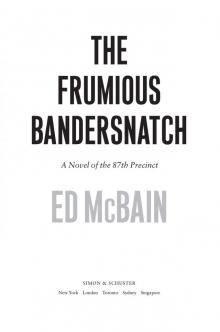 The Frumious Bandersnatch
The Frumious Bandersnatch The McBain Brief
The McBain Brief He Who Hesitates
He Who Hesitates Mischief
Mischief Fat Ollie's Book: A Novel of the 87th Precinct
Fat Ollie's Book: A Novel of the 87th Precinct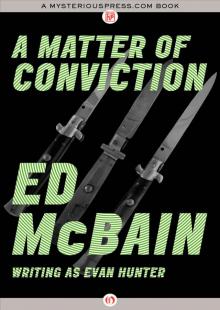 A Matter of Conviction
A Matter of Conviction Ice
Ice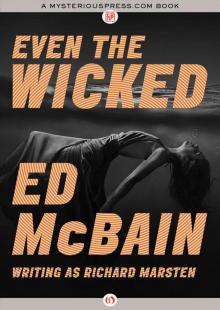 Even the Wicked
Even the Wicked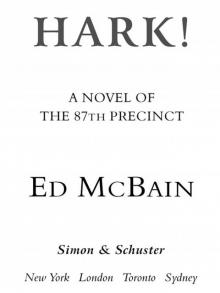 Hark!
Hark!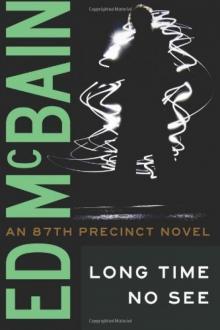 Long Time No See
Long Time No See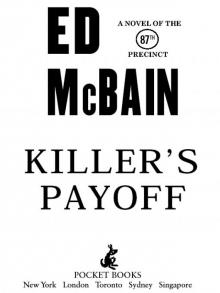 Killer's Payoff
Killer's Payoff Murder in the Navy
Murder in the Navy A Horse’s Head
A Horse’s Head So Nude, So Dead
So Nude, So Dead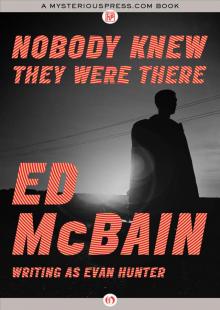 Nobody Knew They Were There
Nobody Knew They Were There Alice in Jeopardy
Alice in Jeopardy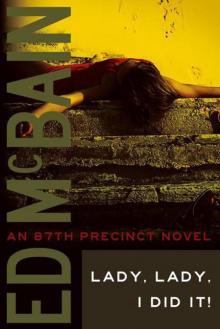 87P14-Lady, Lady, I Did It!
87P14-Lady, Lady, I Did It! Fuzz
Fuzz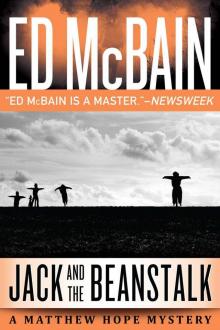 Jack and the Beanstalk (Matthew Hope)
Jack and the Beanstalk (Matthew Hope)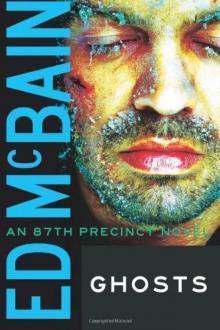 Ghosts
Ghosts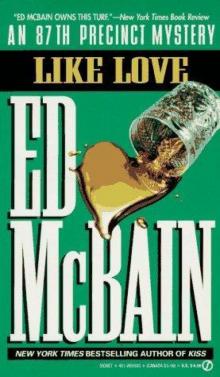 Like Love
Like Love Cut Me In (Hard Case Crime)
Cut Me In (Hard Case Crime)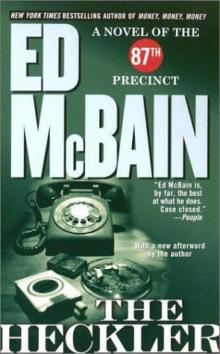 The Heckler
The Heckler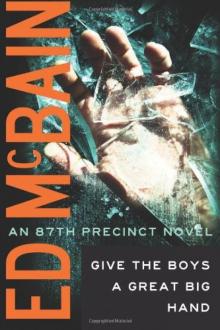 Give the Boys a Great Big Hand
Give the Boys a Great Big Hand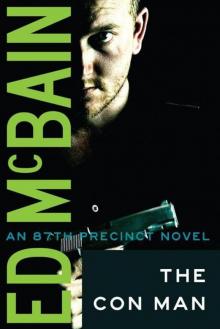 The Con Man
The Con Man Masters of Noir: Volume One
Masters of Noir: Volume One Money, Money, Money
Money, Money, Money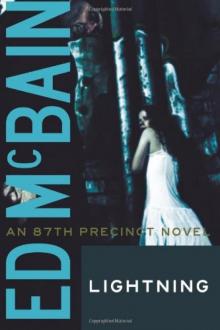 Lightning
Lightning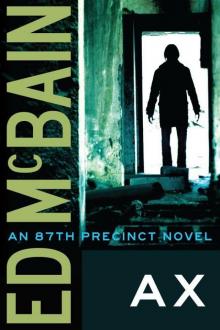 Ax
Ax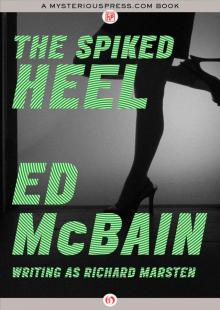 The Spiked Heel
The Spiked Heel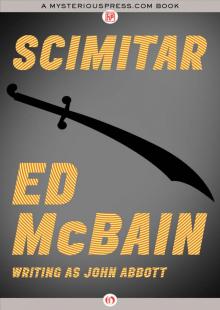 Scimitar
Scimitar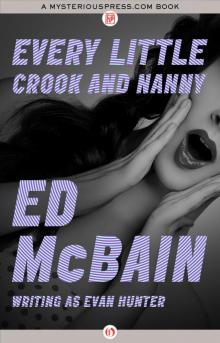 Every Little Crook and Nanny
Every Little Crook and Nanny Criminal Conversation
Criminal Conversation Doors
Doors The Jungle Kids
The Jungle Kids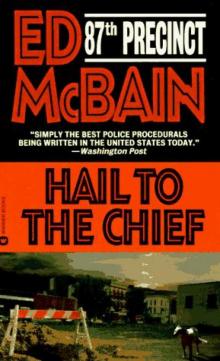 Hail to the Chief
Hail to the Chief Pusher
Pusher Killer's Choice
Killer's Choice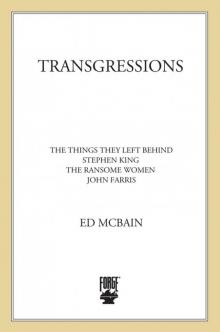 Transgressions Volume 2
Transgressions Volume 2 King's Ransom
King's Ransom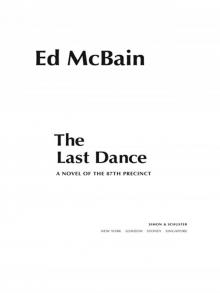 The Last Dance
The Last Dance Fiddlers
Fiddlers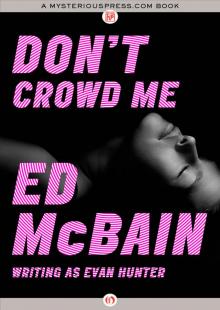 Don’t Crowd Me
Don’t Crowd Me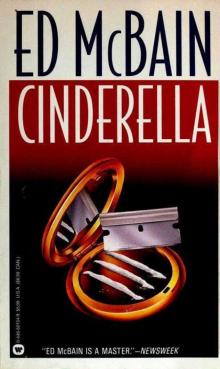 Cinderella
Cinderella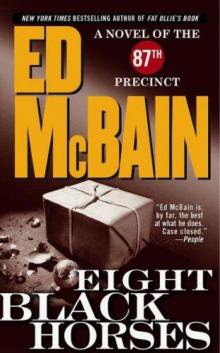 Eight Black Horses
Eight Black Horses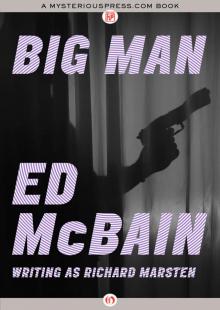 Big Man
Big Man Vanishing Ladies
Vanishing Ladies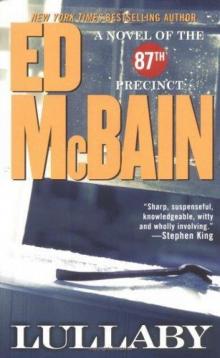 Lullaby
Lullaby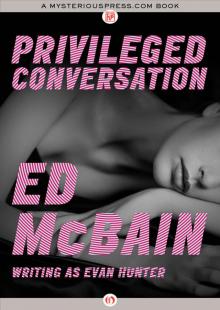 Privileged Conversation
Privileged Conversation Transgressions, Volume 4
Transgressions, Volume 4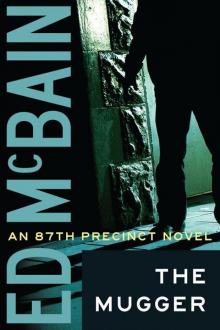 The Mugger
The Mugger Tricks
Tricks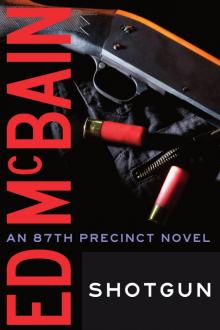 Shotgun (87th Precinct)
Shotgun (87th Precinct) Hail, Hail, the Gang's All Here!
Hail, Hail, the Gang's All Here!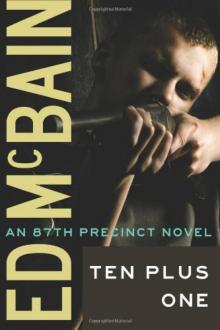 Ten Plus One
Ten Plus One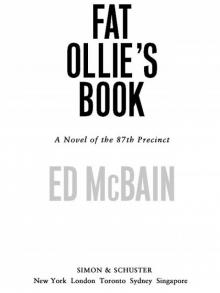 Fat Ollie's Book
Fat Ollie's Book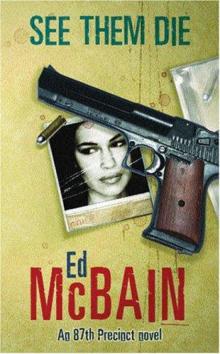 See Them Die
See Them Die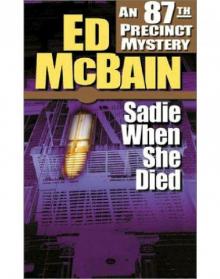 Sadie When She Died
Sadie When She Died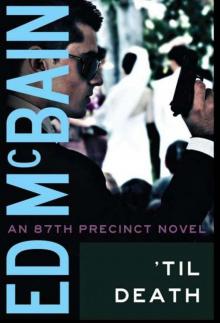 Til Death
Til Death Transgressions Vol. 3: Merely Hate/Walking the Line/Walking Around Money
Transgressions Vol. 3: Merely Hate/Walking the Line/Walking Around Money And All Through the House
And All Through the House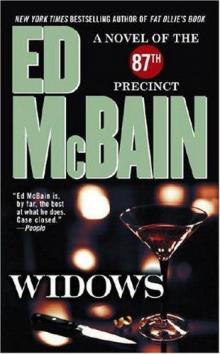 Widows
Widows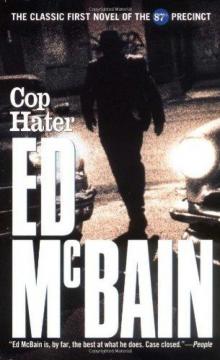 Cop Hater
Cop Hater Transgressions
Transgressions